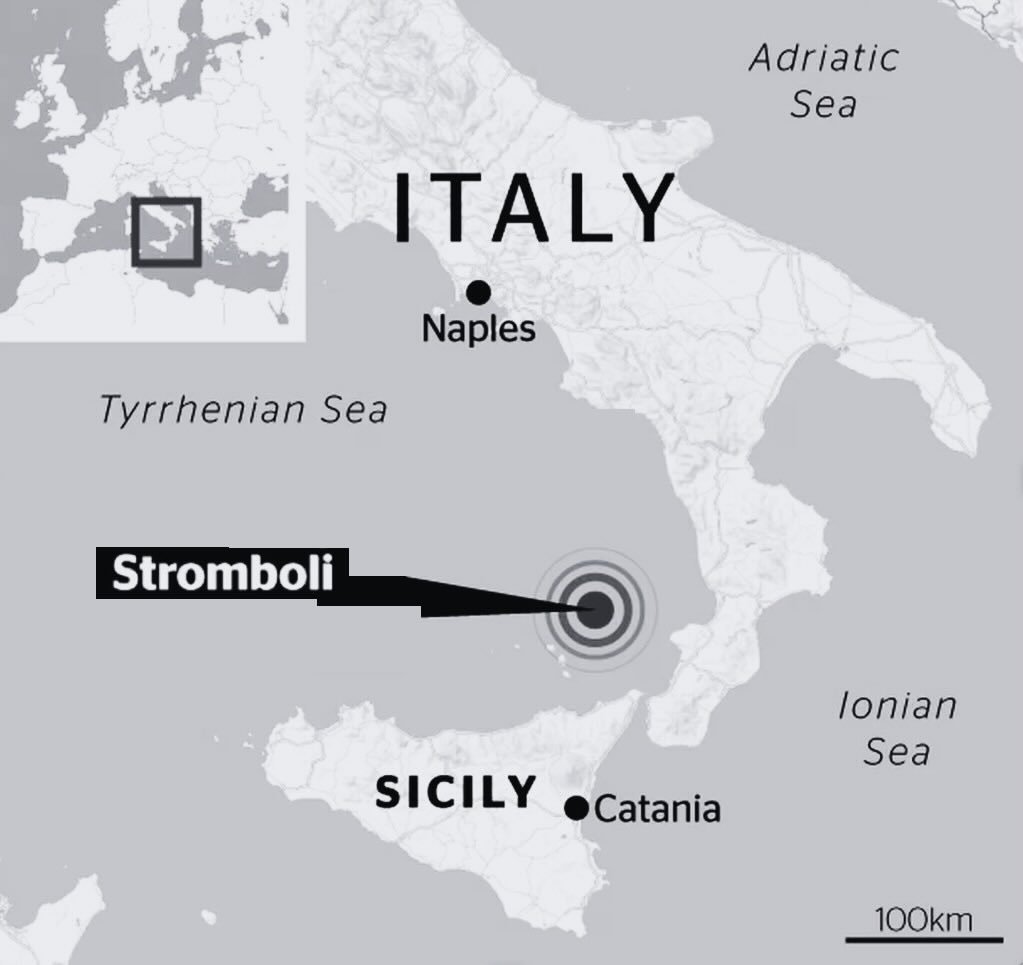Our Italian Heritage
Here’s how our branch of the Panettieri family lived in Stromboli, Italy; immigrated to Brooklyn, New York; pursued the American Dream; and built the foundation for five generations of family success.
Bonus: If you have your own Panettieri story to share, please contact us.
Six Names to Know
Photo Top Row: Siblings Salvatore, Giovanna, Giuseppe & Stefano Panettieri. Seated: Parents Rosa & Vincenzo Panettieri. Photo from early to mid-1920s.
Details: Our family journey to America involved Vincenzo Panettieri (1871-1963), his wife Rosa (“Rose”) Panettieri (1872-1953), and their four children:
Giuseppe (Joseph) Panettieri (1898-1954)
Giovanna (Jennie) Panettieri (1905-1927)
Stefano (Stephen) Panettieri (1906-1991)
Salvatore (Sal) Panettieri (1911-1990)
Planning and financing the journey to America required at least five years of extreme family sacrifices in Stromboli and America (1915 to 1920), and ongoing sacrifices in Brooklyn, New York that extended into the 1950s. Their combined efforts — as family, laborers and entrepreneurs — ultimately propelled five generations of La Famiglia Panettieri forward.
Where They Started
Their starting point was Stromboli, one of seven Aeolian Islands located north of Sicily, Italy.
Our family was part of unique island community that had only 2,500 residents or so in 1915. Together, those islanders were known as Strombolani.
The island had no electricity and no running water. The local economy mostly involved fishing, agriculture (such as capers, olives and wine grapes) and regional trade.
Earning a living wasn’t easy. During the early 1800s, many Strombolani men worked for the Italian Merchant Navy – which moved goods and people around the lower half of Italy and Sicily.
At its peak in the mid-1800s, roughly 65 Strombolani boats navigated the coast. But the industry was decimated in the late 1800s as railways spread across Italy’s mainland & Sicily, according to Famiglie Strombolani, published by Stromboli Connection Organising Group.
Meanwhile, “commuting” daily on slow-moving ferries to economic hubs such as Sicily (75 kilometers or 40 nautical miles away) or Naples (240 kilometers or 130 nautical miles) wasn’t practical.
As the Second Industrial Revolution spread elsewhere during the early 1900s, Stromboli offered little opportunity for family prosperity.
An Active Volcano?
Just to make things extra interesting, La Famiglia Panettieri and their neighbors lived in the shadow of an active volcano.
Villagers on Stromboli island call the volcano "Iddu," which means "Him" in the local Sicilian dialect. Referring to the volcano by name reflected a deep, almost personal respect for its presence and looming power.
Also known as the “Lighthouse of the Mediterranean," the Stromboli volcano has flowed — nearly continuously — for roughly 2,500 years. No joke.
Iddu typically erupts every 10 to 20 minutes. A steady river of red lava flows down the far side of the mountain along a steep gully called Sciara del Fuoco (“Trail of Fire”). But every few decades or so, stronger eruptions deliver lava and thick ash — sometimes to villager rooftops, doorsteps and gardens.
Dreaming of a Better Life
Amid that backdrop, Vincenzo and Rosa dreamt of building a better life — in a “land of opportunity” that’s 4,500 miles away. The distant destination: America.
At the time (1915), there were no flights to this promised land. The only commercial travel option involved slow-moving steamboats that required roughly two weeks to traverse the Atlantic Ocean.
Further complicating matters, leaving Stromboli required immigrants to navigate multiple Italian sea ports (such as Lipari and Naples) before departing for America.
Immense Travel Costs
Vincezo was a hardworking local fisherman. Rosa, his wife, was a devoted homemaker who likely oversaw all family decisions involving their children, their education, household finances, and farming on their property.
The family likely earned only about $2,500 per year or so. Most of that money was earmarked for the basics of life — food and shelter. Perhaps a few hundred dollars per year were available for savings.
The finances were far short of the $7,200 the family needed to reach America.
The math explained: A one-way, third-class steamboat ticket from Italy to America in 1915 cost roughly 200 Italian Lira, or about $1,200 per person in 2025 U.S. dollars, or $7,200 for a family of six.
La Famiglia’s Big Bet
How did this family of six — living with limited finances in the shadow of a volcano — amass the money they needed to set sail and pursue the American Dream?
With no guarantee of success, Vincenzo and Rosa hatched a high-risk plan in 1915:
Vincenzo and his eldest son (Giuseppe, age 17) departed for America aboard the S.S. Ancona. Their goal: Seek out employment in Brooklyn, New York.
Rosa and three children (ages 10, nine and four) remained in Stromboli for the near-term.
After five years of tireless work, the family of six hoped to have enough money to reunite in America.
Now, read how Vincenzo, Rosa and their four children made their two-part journey to America in 1915 and 1920.







